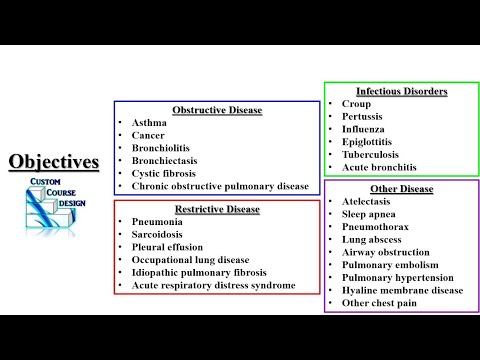Lucrative Pulmonology PA Role: Job Description & Salary

Pulmonology Physician Assistant Job Description Template
Pulmonology Physician Assistant Job Description A pulmonology physician assistant is a healthcare professional who works under the supervision of a pulmonologist to provide comprehensive care to patients with respiratory conditions. They play a crucial role in diagnosing, treating, and managing various pulmonary diseases. Responsibilities: – Conducting patient assessments by taking medical histories, performing physical examinations, and ordering diagnostic tests. – Assisting in the diagnosis and treatment planning for patients with respiratory illnesses, such as asthma, chronic obstructive pulmonary disease (COPD), pneumonia, and lung cancer. – Administering and interpreting pulmonary function tests and other diagnostic procedures. – Collaborating with the pulmonologist in developing and implementing treatment plans, including prescribing medications, providing patient education, and coordinating follow-up care. – Assisting in performing procedures like bronchoscopy, thoracentesis, and arterial blood gas sampling. – Monitoring patients’ progress and making necessary adjustments to treatment plans. – Providing support and guidance to patients and their families, addressing their concerns and answering their questions. – Keeping accurate and up-to-date medical records. Skills and Qualifications: – A Bachelor’s degree in a healthcare-related field, followed by completion of an accredited physician assistant program. – Certification as a physician assistant and a state license to practice. – Strong knowledge of pulmonary medicine, including respiratory anatomy, physiology, and common diseases. – Excellent clinical skills, including the ability to perform physical examinations and interpret diagnostic tests. – Proficiency in using electronic medical record systems and other healthcare software. – Effective communication and interpersonal skills to collaborate with patients, families, and other healthcare professionals. – Strong attention to detail and the ability to work in a fast-paced environment. – Dedication to continuing education and staying updated on the latest advancements in pulmonology. Overall, a pulmonology physician assistant plays a vital role in providing high-quality care to patients with respiratory conditions. Their expertise and support contribute to improving patients’ health and quality of life.Pulmonology Physician Assistant Responsibilities
- Performing physical examinations on patients with respiratory conditions
- Taking medical histories and documenting patient information
- Ordering and interpreting diagnostic tests, such as pulmonary function tests, chest X-rays, and CT scans
- Assessing and diagnosing respiratory conditions, such as asthma, chronic obstructive pulmonary disease (COPD), pneumonia, and lung cancer
- Developing and implementing treatment plans for patients, including prescribing medications and therapies
- Providing patient education on respiratory conditions, treatment options, and preventive measures
- Monitoring and managing patients with chronic respiratory conditions, including making adjustments to treatment plans as necessary
- Performing procedures, such as bronchoscopy, thoracentesis, and pulmonary rehabilitation
- Collaborating with other healthcare professionals, such as pulmonologists, nurses, and respiratory therapists, to provide comprehensive care
- Participating in research and staying up-to-date with advancements in the field of pulmonology
Pulmonology Physician Assistant Requirements
How Much Does A Pulmonology Physician Assistant Make?
Pulmonology Physician Assistant Salary
| Experience Level | Annual Salary |
|---|---|
| Entry Level | $80,000 – $100,000 |
| Mid-Career | $100,000 – $120,000 |
| Experienced | $120,000 – $140,000 |
| Late Career | $140,000 – $160,000+ |
A Pulmonology Physician Assistant specializes in providing medical care for patients with respiratory issues under the supervision of a pulmonologist. The salary of a Pulmonology Physician Assistant varies based on their experience level. Entry-level PAs can expect to earn between $80,000 and $100,000 per year, while mid-career PAs earn between $100,000 and $120,000. Experienced PAs can earn between $120,000 and $140,000, and those in late career stages can earn $140,000 or more annually. These salaries may vary depending on factors such as location, practice setting, and additional certifications.
Pulmonology Physician Assistant Salaries by Country
Top Paying Countries for Pulmonology Physician Assistant
| Country | Average Salary |
|---|---|
| United States | $110,000 |
| Switzerland | $95,000 |
| Australia | $90,000 |
| United Kingdom | $85,000 |
| Canada | $80,000 |
Pulmonology Physician Assistants are highly valued healthcare professionals specializing in respiratory care. They play a crucial role in diagnosing and treating lung diseases. The salary of a Pulmonology Physician Assistant varies by country, with the highest average salaries found in the United States, Switzerland, Australia, United Kingdom, and Canada. These countries offer attractive compensation packages, reflecting the demand and importance of their skills in managing respiratory conditions. Pulmonology Physician Assistants are essential members of the healthcare team, providing comprehensive care to patients with lung disorders and contributing to improved respiratory health outcomes.
A video on the topic Pulmonology Physician Assistant
Video Source : Katy ConnerInterview Questions for Pulmonology Physician Assistant
1. What is your role as a Pulmonology Physician Assistant?
As a Pulmonology Physician Assistant, my role is to assist the pulmonologist in diagnosing and treating patients with respiratory conditions. I conduct patient assessments, order and interpret diagnostic tests, develop treatment plans, prescribe medications, and provide patient education and counseling.
2. Can you explain the most common respiratory conditions you encounter in your practice?
Some of the most common respiratory conditions I encounter include asthma, chronic obstructive pulmonary disease (COPD), pneumonia, bronchitis, and lung cancer. These conditions can vary in severity and require different treatment approaches.
3. How do you typically diagnose respiratory conditions?
To diagnose respiratory conditions, I typically start by taking a detailed medical history and conducting a physical examination. I may order additional tests such as pulmonary function tests, chest X-rays, CT scans, or blood tests. These diagnostic tools help me determine the underlying cause of the respiratory symptoms.
4. What treatment options do you commonly recommend for respiratory conditions?
Treatment options for respiratory conditions depend on the specific condition and its severity. Commonly, I may recommend medications such as bronchodilators, corticosteroids, antibiotics, or antiviral drugs. Additionally, lifestyle modifications like smoking cessation, pulmonary rehabilitation, and vaccinations are often part of the treatment plan.
5. How do you collaborate with other healthcare professionals in managing respiratory conditions?
I believe in a multidisciplinary approach to managing respiratory conditions. I collaborate closely with pulmonologists, respiratory therapists, nurses, and other healthcare professionals to ensure comprehensive and coordinated care for patients. Regular communication and sharing of patient information are essential for effective collaboration.
6. Can you explain your approach to patient education and counseling?
Patient education and counseling are crucial in managing respiratory conditions. I take the time to explain the diagnosis, treatment options, and expected outcomes to patients in a clear and understandable manner. I encourage patients to ask questions and address any concerns they may have. Additionally, I provide guidance on lifestyle modifications and self-care practices to improve their respiratory health.
7. How do you stay updated with the latest advancements in pulmonology?
As a Pulmonology Physician Assistant, I understand the importance of staying updated with the latest advancements in the field. I regularly attend medical conferences, participate in continuing education programs, and subscribe to reputable medical journals. By staying informed, I can provide the most up-to-date and evidence-based care to my patients.
8. How do you handle challenging or difficult patients in your practice?
When dealing with challenging or difficult patients, I prioritize empathy and active listening. I strive to understand their concerns and address them with patience and respect. I also collaborate with the healthcare team to find alternative approaches or involve a patient advocate if necessary. Building trust and maintaining open communication are key in managing difficult patient situations.
9. Can you share a challenging case you encountered in your practice and how you managed it?
I encountered a challenging case where a patient with severe COPD was struggling to adhere to their treatment plan. I took the time to understand their concerns and fears, addressing misconceptions and providing additional education. I involved their family members to provide support and encouragement. By working closely with the patient and their family, we were able to develop a modified treatment plan that improved their adherence and overall respiratory health.
10. What do you find most rewarding about working in pulmonology as a Physician Assistant?
One of the most rewarding aspects of working in pulmonology as a Physician Assistant is the opportunity to make a positive impact on patients’ lives. Being able to diagnose and treat respiratory conditions, improve patients’ quality of life, and help them manage their symptoms is incredibly fulfilling. Additionally, building long-term relationships with patients and witnessing their progress brings immense satisfaction.






